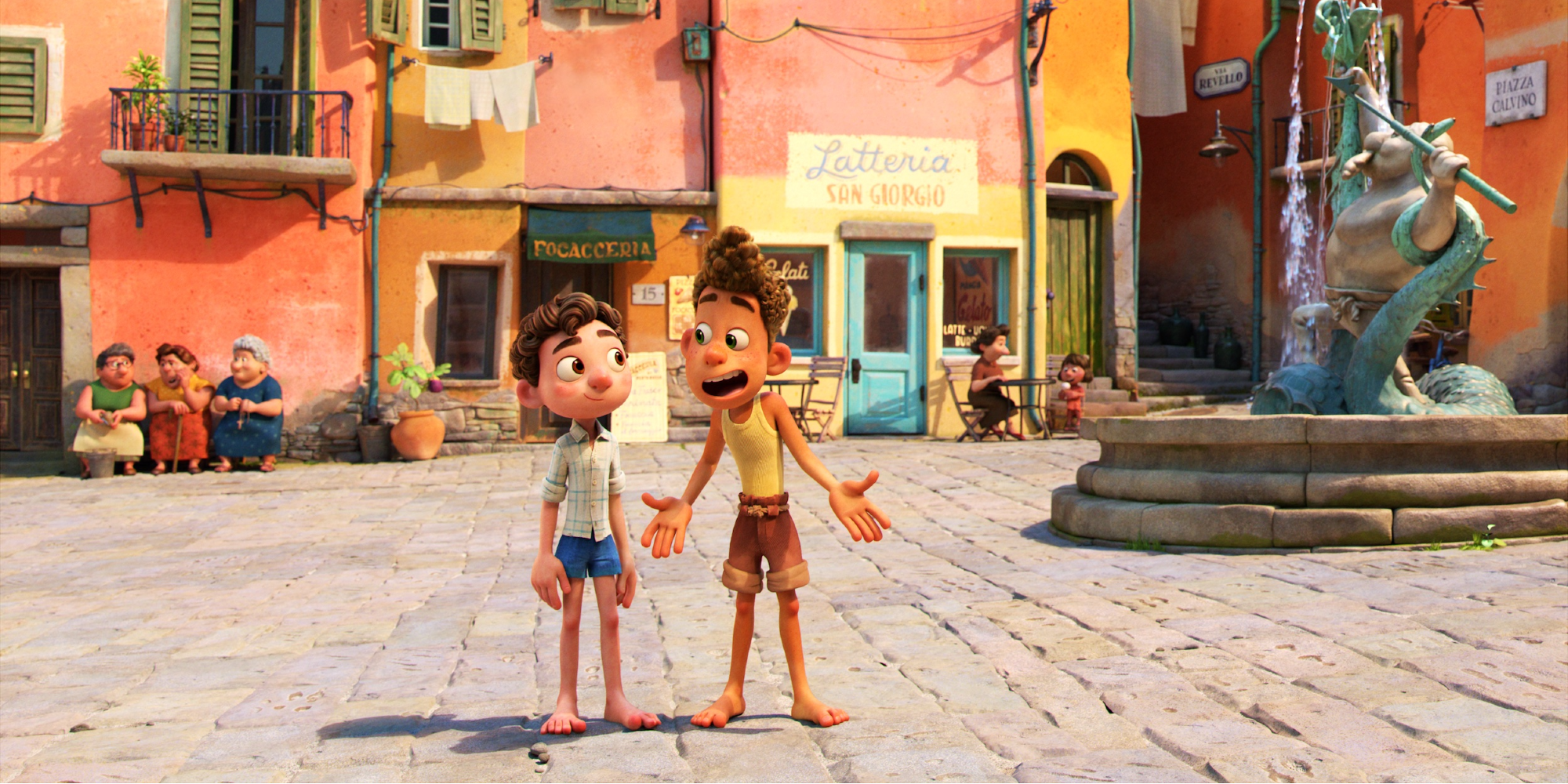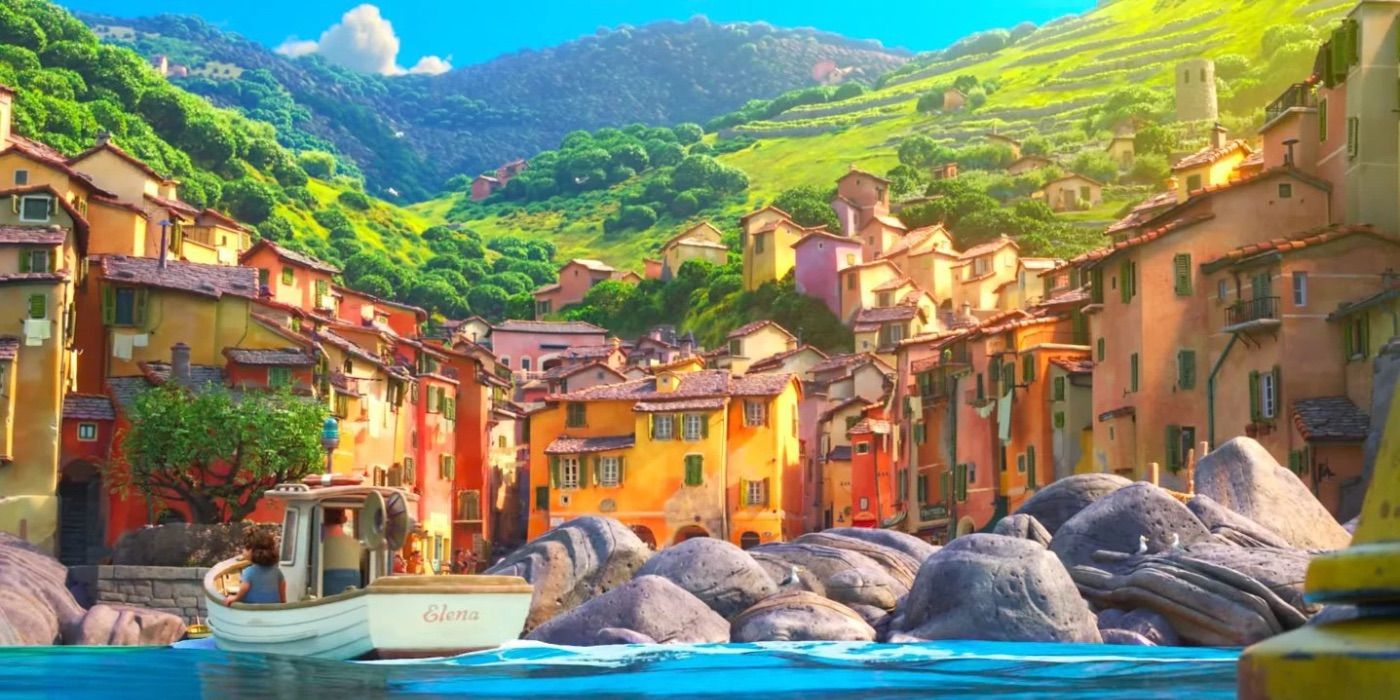Where does Luca take place? The Pixar movie is set in Portorosso, Italy, which is a fictional location, but it's based on real small towns in Italy. Here’s the real-life inspiration behind Luca’s setting.
Director Enrico Casarosa’s Luca presents a simple coming-of-age tale on the sun-soaked Italian coast. Luca Paguro (Jacob Tremblay) and Alberto Scorfano (Jack Dylan Grazer), two young sea monsters, travel to Portorosso disguised as humans. There, they meet Giulia Marcovaldo (Emma Berman), a girl determined to win the Portorosso Cup, and together the trio train and compete to win the grand prize so Luca and Alberto can get a Vespa.
SCREENRANT VIDEO OF THE DAY
Luca marks Casarosa’s feature directorial debut, after working as a Pixar storyboard artist and helming the Academy Award-nominated La Luna in 2011. The sea monster elements of Portorosso, Italy, were inspired by Italian regional folklore, while the movie’s fishing town is based on the idyllic locations of the Italian Riviera, but where does Luca take place in terms of its inspiration? The movie is clearly very personal to Casarosa, and he's discussed how his childhood memories link to the movie’s plot, setting, and themes.
Luca Is A Love Letter To The Creator's Italian Childhood

Hailing from Genoa, Italy, and having spent his summers on the coast, the story of Luca is firmly rooted in Casarosa’s youth. Alberto is based on Casarosa’s real-life childhood best friend of the same name, with whom the director enjoyed many summers in the 1980s. The film’s characters reportedly reflect how Casarosa was more introverted, while the basis for Luca's Alberto was more carefree and prone to mischief. As the director told Entertainment Weekly, “I was timid and kinda shy, and he was following a passion every week. I would just run around the old town in Genoa, which is kinda dicey.” From the cobbled streets and colorful buildings to the local fishermen and cuisine, the movie’s Portorosso may be fictional, but the atmosphere vividly reflects the actual Italian Riviera.
Luca also contains several mythical elements. Casarosa commented on his childhood fascination with illustrations of sea monsters on old maps. In the same interview, he recalled how the coastal area of Cinque Terre was full of local legends of sea dragons and other creatures: “You find out later it’d be tall tales to protect their favorite fishing spot.” The idea of combining fantastical elements like Luca's sea monsters with otherwise serene locations is always interesting and provides a great means of educating audiences about different cultures. It’s clear the filmmakers also want the world to feel natural, as Casarosa told D23 how he sent an art team to the Italian Rivera to research its people and rich culture.
Although evoking the nostalgia of 1950s and 1960s Italy, predating the director's childhood, Luca is clearly a labor of love for Casarosa. The Italian setting and time period easily evoke the feel-good nature of golden age classics like Roman Holiday. However, the director’s personal attachment and use of local legends make the movie stand out as an imaginative adventure of its own.
Where The Name Portorosso Came From

Aside from Luca's time period setting, the film draws on other real historical components in crafting Portorosso. The name is likely a blending of the names Portovenere and Monterosso, both of which are real villages in the Italian Riviera. The city of Genoa (where Casarosa actually spent his childhood summers) is in the same region and is likely where Giulia's hometown of Genova got its name. It's also possible that the name Portorosso is meant to be a nod to Studio Ghibli's film Porco Rosso. The 1992 animated feature centers on a pilot-turned-pig of the same name and is also partially set in Italy, as well as in Croatia, during the 1930s. Given that Casarosa is an admirer of Hayao Miyazaki's, this name parallel could very well have been intentional on Luca's part.
